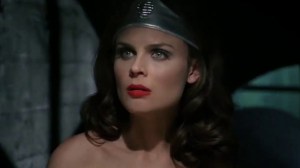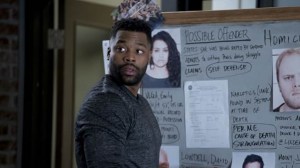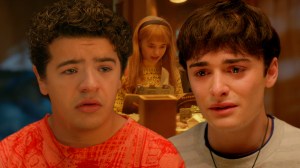The Jedi is one of the best-known concepts introduced in the Star Wars saga. An order of knights that wield laser-bladed swords and magic-like powers, these space paladins remain locked in a generational struggle with their counterparts, the dark lords of the Sith. The Jedi way is first imparted on Luke Skywalker, the last hope for the restoration of the once multitudinous Jedi Order, by masters Obi-Wan Kenobi and Yoda. They try to stress to Luke that the Jedi way is not about grand heroics and war valor, but about maintaining a steady, peaceful mind and finding balance. It takes Luke time and error to learn this lesson and its one that the success of Stars Wars has diluted with time.
Videos by ComicBook.com
The idea that Jedi aren’t meant to be “big damn heroes” is present through their arcs in the saga. Anakin Skywalker falls because he can’t let go of his desire to play hero and save everyone. In Star Wars: The Empire Strikes Back, Luke almost falls because he can’t curb his heroic impulse to run headlong into Darth Vader’s trap. But by Star Wars: Return of the Jedi, he’s learned. He recognizes the danger he’s putting his friends in with his mere presence. He faces the Emperor and, after almost going down the same path as his father, defeats Palpatine by choosing not to act and putting his faith in the Force. Had Luke succeeded in striking down Palpatine, he himself would have fallen to the Dark Side, replacing one evil with another.
By following the true teachings of the Jedi, Luke saw the better, harder path to victory, not by striking down his enemy, but by redeeming his father.
Obi-Wan Kenobi has a more subtle, though similar arc to Luke that extends into television. His duel with Darth Maul in The Phantom Menace is a highlight of the prequel saga, an extended set-piece of lightsaber acrobatics. Contrast that fight to his rematch with Darth Maul in the Star Wars Rebels episode “Twin Suns,” where Maul has been preparing for this meeting for years, only for Obi-Wan to strike him down with a single swing of his lightsaber. No more childish acrobatics. This succinct, precise strike is the work of one who has had years to do nothing much more than commune with the Force.
Star Wars: The Last Jedi teaches this lesson again. With her connection to the Force awakened, Rey seeks to increase her knowledge of how to wield it against the First Order. Luke has to teach her that Force is not a weapon, or power to be controlled. As he learned in his training, a true Jedi allows the Force to control him, not the other way around. The Jedi aren’t heroes, and believing they are is the hubris that allowed the dark side to manifest with such power as the Sith, the Empire, and the First Order.
Some, including Rey, have a problem with Luke’s lessons. Luke can be interpreted here to be preaching nihilism or apathy, a far cry from the noble impulses he could barely contain as a youth on Tatooine. But Luke’s final lesson was never revealed, and Star Wars: The Rise of Skywalker is still to play out. It could be revealed still, and it could bring a new understanding of what balance in the Force means.
There’s no denying that wielding a lightsaber to fight throngs of enemies — be they stormtroopers, battle droids, or First Order — is empowering. As children, we might swing cheap, plastic extendable lightsabers at friends during pretend adventure sessions. As adults, we take that same power fantasy into the virtual realm, embodying our Jedi dreams via video games like Star Wars: The Old Republic and Star Wars Jedi: Fallen Order.
But these power fantasies focus on the surface level aspects of being a Jedi and omit the philosophical underpinnings. What’s often inherent in these power fantasies is the joy of inflicting one’s will on another. It may be done for noble intentions — a hero using force to defeat a villain — but it’s still about using your will to dominate another.
Fallen Order is a particularly egregious misinterpretation of the Jedi. You play a character who underwent partial, incomplete Jedi training. As this character, you fight enemies using your Force abilities. In a concession to video game logic, your Force attunement is represented by a meter. That meter empties as you make use of your Force abilities, then refills via combat. You’re rewarded with more Force by inflicting violence on others. If this were a game about playing a Sith, that might make sense. In a game about a Jedi, it’s gross mutilation of the code the hero is meant to be following.
In a way, this misunderstanding of Jedi is something that ails the Jedi themselves at the time the republic falls. After generations serving the republic, Star Wars: The Phantom Menace and Star Wars: Attack of the Clones show this acetic order filling the roles of police officers, soldiers, and minor diplomats. The idea that two Jedi are sent to handle trade negotiations in The Phantom Menace is ridiculous by intention, a sign that the Jedi have lost their way. That one like Qui-Gon Jinn, who is even more invested in Jedi spirituality than most of his peers, is an outlier in the Order at the time is another canary in the coal mine. These heroic urges are often born of fear, anger, or hatred, their noble ends helping to justify giving into those emotions.
Everything that Star Wars has taught us up until now suggests that a Jedi who follows the path of the superhero, looking to right every wrong, is doomed to fail or fall, ensuring they are put on a path to the Dark Side.
Star Wars: The Rise of Skywalker lands in theaters on December 20th.

Welcome to Star Wars Week! ComicBook.com is celebrating the release of Star Wars: The Rise of Skywalker all week long with an in-depth look at the last four decades spent in the galaxy. Click on the banner to see more of our exclusive coverage and videos celebrating all things Star Wars!








